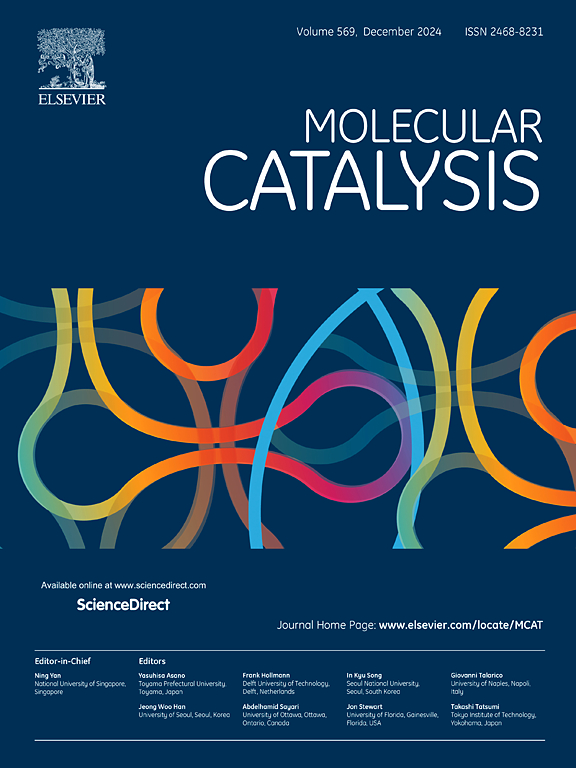Development of ruthenium(II) bis(N-Heterocyclic Carbene) complexes for homogeneous catalysis
IF 3.9
2区 化学
Q2 CHEMISTRY, PHYSICAL
引用次数: 0
Abstract
A tetrakis(acetonitrile) complex bearing a bidentate bis(N-Heterocyclic Carbene) ligand was synthesized, and its formation was extensively studied. Triethylamine played a pivotal role in the reaction, initially forming a ruthenium(II)-triethylamino complex with the precursor. It then functioned as a base to produce the ruthenium(II) bis(NHC) complex, which was found to be very active in catalyzing the direct ortho-arylation of 2-phenylpyridine, with loadings as low as 2 % (a significant result considering that most reported examples in the literature require loadings as high as 10 % and are typically limited to monoarylations). Additionally, the reactive complex was successfully functionalized with various bidentate ligands of the amino, pyridine, and phosphine types, yielding a series of novel ruthenium(II) bis(NHC) dicationic organonitrile complexes. These complexes were evaluated in the catalytic transfer hydrogenation reaction, demonstrating notable activity (TOF of 50,000 h-1). It is notable that within the pool of reported ruthenium(II) complexes featuring bidentate bis(NHC) ligands, cis- [Ru(CH3CN)2(1,1′-bis(3-methyl-imidazol-2-ylidene)methylene))(2–2′Bipyridine)](PF6)2 demonstrates exceptional high rate, marking it as one of the fastest known. Overall, the synthesized tetrakis(acetonitrile) complex proves to be a promising platform for the development of future catalysts.

求助全文
约1分钟内获得全文
求助全文
来源期刊

Molecular Catalysis
Chemical Engineering-Process Chemistry and Technology
CiteScore
6.90
自引率
10.90%
发文量
700
审稿时长
40 days
期刊介绍:
Molecular Catalysis publishes full papers that are original, rigorous, and scholarly contributions examining the molecular and atomic aspects of catalytic activation and reaction mechanisms. The fields covered are:
Heterogeneous catalysis including immobilized molecular catalysts
Homogeneous catalysis including organocatalysis, organometallic catalysis and biocatalysis
Photo- and electrochemistry
Theoretical aspects of catalysis analyzed by computational methods
 求助内容:
求助内容: 应助结果提醒方式:
应助结果提醒方式:


